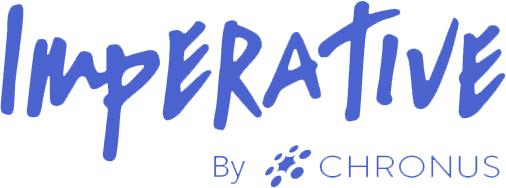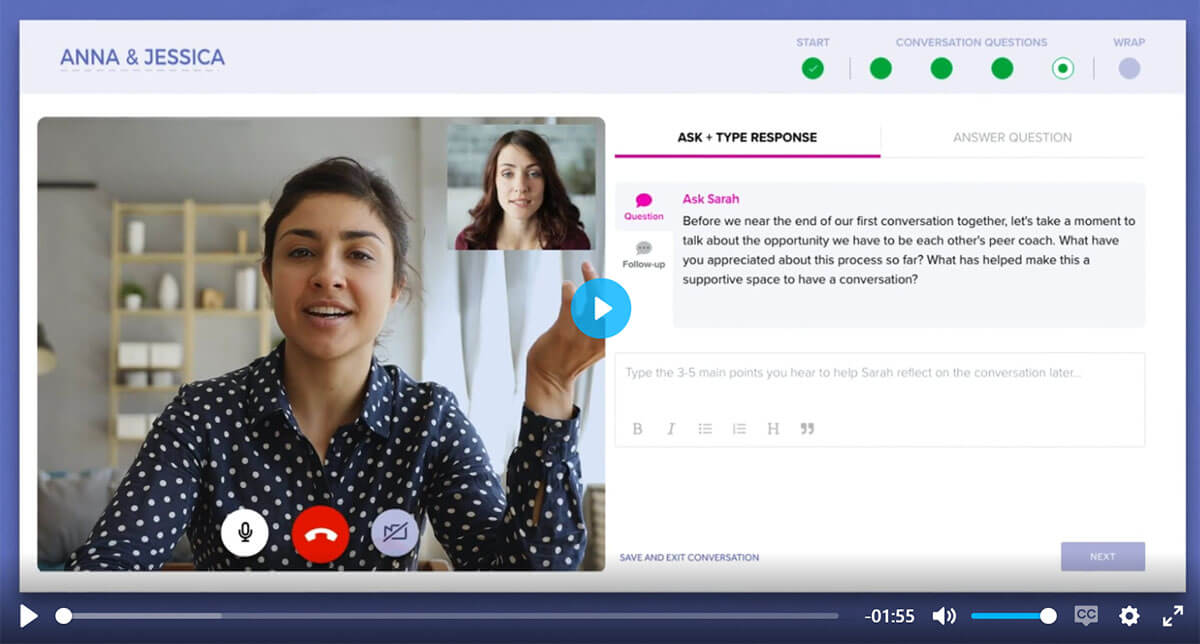How to Build Employee Connection in the Workplace
The science of connection at work – and how to apply it with your hybrid and remote teams.
The success of hybrid and distributed workplaces is dependent on building relationships and trust. Co-workers must feel connected to each other. Since remote work has brought so many opportunities for isolation at work, staying connected is more challenging than ever.
This isn’t just a human resources concern. It is clear to every leader who manages a team today that relationships among employees are key to wellness, productivity, and a positive employee experience. What is less clear is how to build them. The latest research starts to paint a clear picture of what is necessary and the practices every leader can operationalize.
The Employee Connection Gap
Employees are lonely and isolated at work today in part because virtual work technology has focused on transactions and not on relationships.
Developing relationships in a virtual and distributed workplace is hard. Today, we spend an estimated 30% of our time in meetings mostly over video. We tend to talk to the same people over and over again. We might start the call with a quick check-in about the weather or our weekend and then dive into the agenda. We are spending time together, but not really connecting. This isn’t great for mental health or enabling people to feel a sense of belonging – and it isn’t great for employee retention either.
A lack of connection leaves us feeling siloed, disjointed, and disengaged at work. And standard employee resources, work environments, and employee benefits don’t necessarily translate to hybrid and remote workplaces.
We have built the current virtual workplace for two things:
1. To optimize workflow management
2. To distribute information efficiently
These may remove friction in relationships but are not connection builders. If these are the only ways we interact with people, we fail to connect with people even if we spend time interacting with them. As Stanford’s Chip and Dan Heath write in The Power of Moments, connection is built on the feelings of warmth, unity, empathy and validation. It is about feelings, not about transactions.
To begin addressing this fundamental lack of employee connection at work, we can begin with defining what exactly “employee connection” means.
What is Employee Connection?
Employee connection is social capital – the goodwill and trust between people. It it one of the most critical assets of a company.
Employee connection is the bond built between people based on trust. This bond can be built through caring: demonstrating that someone is looking out for their best interests. This is critical to building connections within workgroups with a high level of dependency that spend significant time together. For relationships with less interaction and dependency, we rely more on trust built from confidence in the competence of someone to feel connected.
Employee connection builds social capital within teams and across organizations. It builds a network of trust and information sharing that enables groups to move more quickly because there is a foundation of trust. It is critical to building agility and engagement. Connection is one of the most valuable assets for high-performing organizations.
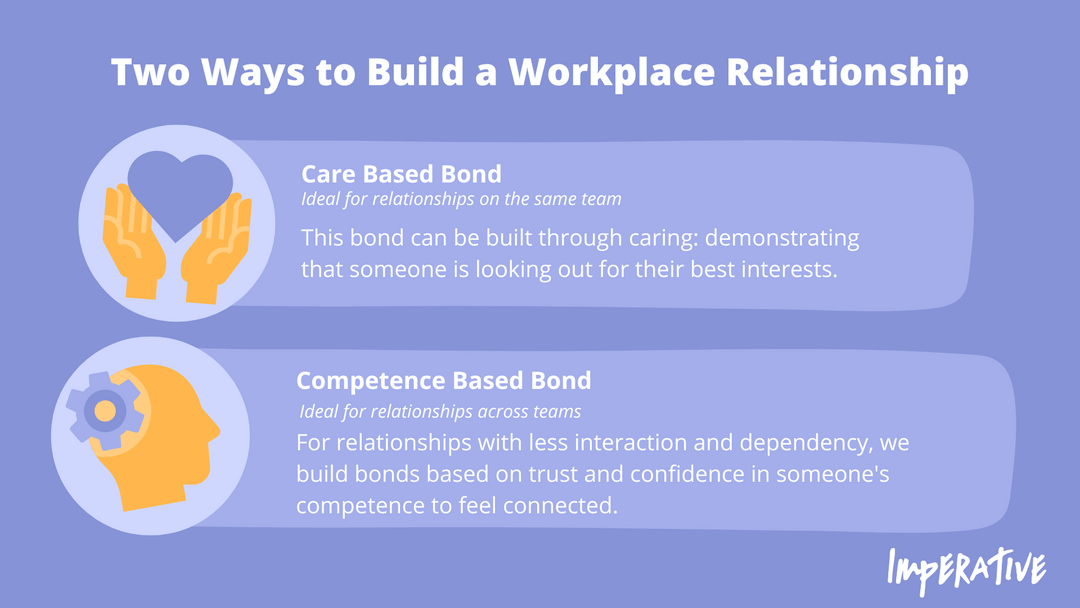
The Business Case for Employee Connection
The benefits of connected individuals and the consequences of disconnection are compounded on the organizational level. Connection is imperative for performance and retention.
Impact on Performance
An organization that prioritizes connection benefits from a high degree of collaboration and meaningful dialogue between employees. A connected culture creates safe spaces for employees to challenge each other and share diverse perspectives. An environment that encourages different thinking styles, habits and perspectives facilitates increased innovation and productivity.
A Gartner study has shown that 75% of organizations with frontline decision-making teams reflecting a diverse and inclusive culture will exceed their financial targets. And gender-diverse and inclusive teams outperformed gender-homogeneous, less inclusive teams by 50%, on average.
Impact on Retention
The benefits of connected individuals and the consequences of disconnection are compounded on the organizational level.
An organization that prioritizes connection benefits from a high degree of collaboration and meaningful dialogue between employees. A connected culture creates safe spaces for employees to challenge each other and share diverse perspectives. An environment that encourages different thinking styles, habits and perspectives facilitates increased innovation and productivity.
A Gartner study has shown that 75% of organizations with frontline decision-making teams reflecting a diverse and inclusive culture will exceed their financial targets. And gender-diverse and inclusive teams outperformed gender-homogeneous, less inclusive teams by 50%, on average.
As Rob Cross has found in his research on Organizational Agility, when employees are not connected to each other on an organizational level innovation, retention, and agility are threatened – leading to a culture of silos, disengagement, and ultimately resulting in high turnover rates. A 2022 study from McKinsey sites that over half of employees who left their job in the past six months did not feel valued by their organization (54 percent) or manager (52 percent), or they lacked a sense of belonging (51 percent).
A culture of disengagement creates high turnover rates that negatively impact productivity and profits. Recent data shows that the replacement of a single employee is estimated to cost the organization 150% of that employee’s annual revenue.
Three Ways To Build Employee Connection
Different types of relationships require different approaches. You, therefore, need a strategy for each of the three types of connection.
There are three ways to build connections in an organization.
– 1:1 connection between teammates (Imperative solution)
– 1:1 connection between teams (Imperative solution) and
– Many-to-many connection across a team.
1:1 Connection Between Teammates
Connection and trust are built between individuals on a work team by demonstrating caring. The best way to build this connection is through what psychologist Harry Reis calls responsiveness. Responsiveness is built through mutual understanding, validation, and caring. This is created through meaningful conversations – interactions where two people mutually disclose stories and challenges and use active listening to ensure the other person feels they care and are validated.
These are peer coaching conversations and follow the key tenets of coaching: active listening, avoiding advice, and accountability.
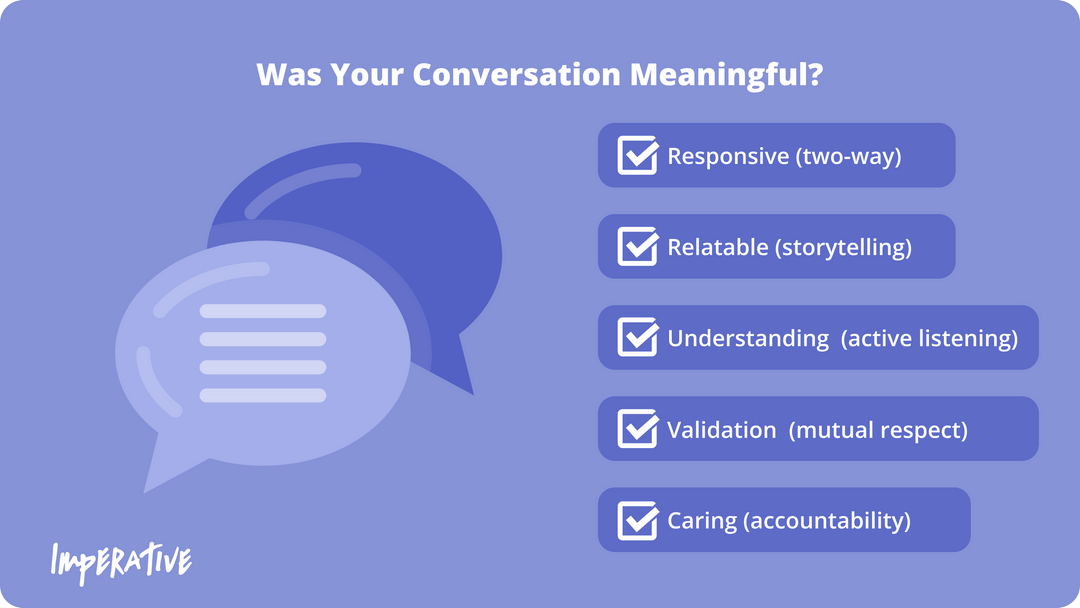
1:1 Connection Between Teams
To build boundary spanning connections, the most difficult to build virtually, employers need to start by building connections between individuals that span those boundaries. You should begin by building a sense of belonging between two people by connecting them through something they have in common. This is typically done through programs like manager training (all managers), onboarding (new employees) or affinity groups (shared interest/identity). It can also be done by connecting people one-on-one based on what they share in common.
Introductions, however, are not enough. As our research at Imperative has found, leaders also need to provide the place and skills to engage in the coaching-style conversations that build actual feelings of connection. Research shows that these coaching connections should be focused on problem-solving and demonstrating competence which builds trust with boundary-spanning relationships.
Many-to-Many Connection Across a Team
Groups build connections between each other on a one-on-one basis and as a collective through shared experiences, challenges and purpose. Leaders need to design their weekly, monthly, quarterly and annual team interactions to intentionally build in moments for shared experiences, challenges, and purpose.
Shared Experiences: One of the greatest challenges in hybrid work is to create moments of what scientists call synchronicity. When members of a team all experience or do something at the same time, it creates a sense of connection. We increasingly work asynchronously and while this increases flexibility, it hurts the feeling of connection. This is not about a status meeting – it is about everyone actually accomplishing something or experiencing something meaningful together.
Shared Challenges: Teams feel connected when they share a struggle – a mountain to climb. When a team is just doing a steady drumbeat of consistent work, we feel less connected. When we are pushed together to a new level and succeed, it bonds us and forms a shared identity. This can be a big hairy audacious goal, covering for the parental leave of a teammate, or overcoming a setback.
Shared Purpose: When a team is clear on the “why” behind their goals and sees how their work enables the achievement of those goals, it binds them together. Leaders need to ensure the team has a clear purpose and that everyone knows how their work is critical to success. Championship sports teams and high-performing emergency room teams are great examples of creating connection through shared purpose.
Key Barriers to Connection at Work
Companies have failed to build the infrastructure to enable connection which is exacerbated in remote and hybrid workplaces.
Many leaders assume relationships and connections happen organically, but Imperative’s 2022 study of the workplace proves that people face significant barriers. Despite spending over two hours per week developing relationships, people struggle with who, how, and where to build relationships. And they lack the psychological safety to initiate relationships at work.
87% of people would be willing to invest more time in relationship building, an average 2.5 hours per week. The core challenge is that they are not getting the support they need from their organization to use their time effectively.
Employers have built the infrastructure to support workflow and information sharing but have not invested in the technology to build social capital, the asset created through connection.
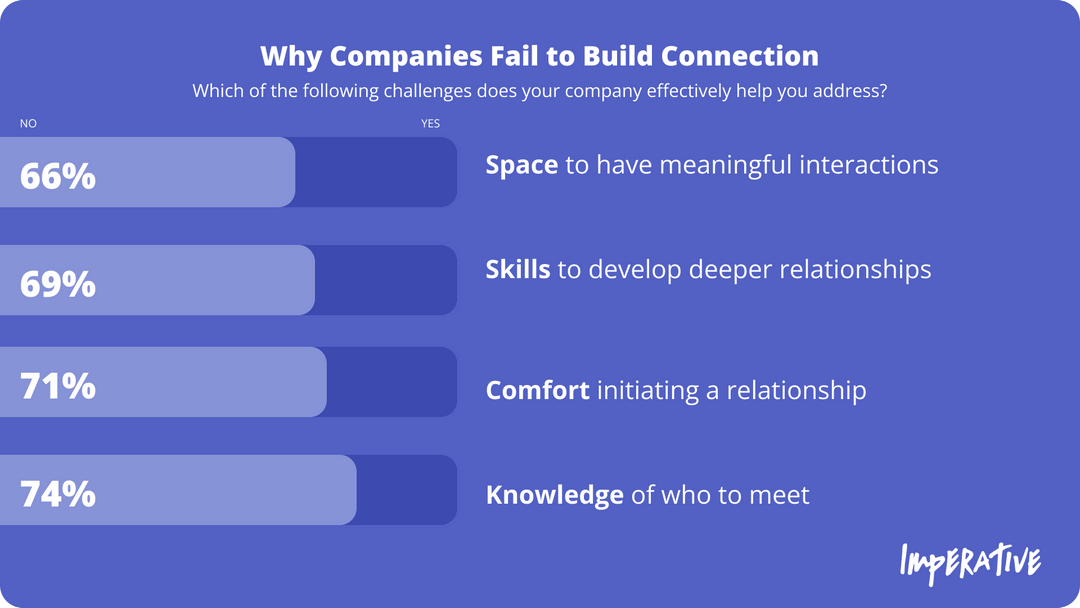
How Imperative Can Help Improve Employee Connection
Imperative is the software platform that builds and sustains connection in hybrid and remote workplaces.
Imperative leverages the latest research and technology to accelerate trust between people by enabling them to have meaningful conversations where they can demonstrate care and competence. After just three conversations on Imperative, 87% of employees report they have built a meaningful relationship they plan to sustain – we call this ‘connection’.
Employees start by creating a unique profile where Imperative collects insights about their values, problem solving approach, motivation, and experiences. This enables the platform to intelligently match pairs of people for guided one-hour conversations that are personalized to enable each person to demonstrate care and competence.
Each hour-long conversation starts with a quick check in on relationships, impact, and growth at work. This quickly transitions employees from their busy day to a space to be present and empathetic with each other. We provide a personalized guided conversation structure to make it easy to form connection. And after having a conversation, both members commit to take an action to address the challenges or opportunities they discussed.
The data Imperative collects throughout the process provides leaders unprecedented insights into employee connection and relationships. It is the employee connection dashboard for the agile hybrid workplace.
Leading employers like Zillow, Microsoft, and Boston Scientific use Imperative to build and measure connections at scale. It is how they address issues like employee retention and employee isolation, help new hires build their networks, connect managers across groups to problem solve, and break down silos across teams.

Written By Aaron Hurst
Aaron Hurst is a foremost expert on purpose at work, author of Purpose Economy & founder of Imperative. In 2014, he brought global awareness to the rise of the fourth economic era in history, the Purpose Economy. Previously, as the founder of the Taproot Foundation, Aaron catalyzed the $15 billion pro bono service market. He has written for or been featured in The New York Times, The Wall Street Journal, World Economic Forum, Fast Company, MIT Sloan Management Review & was named a LinkedIn Influencer.
